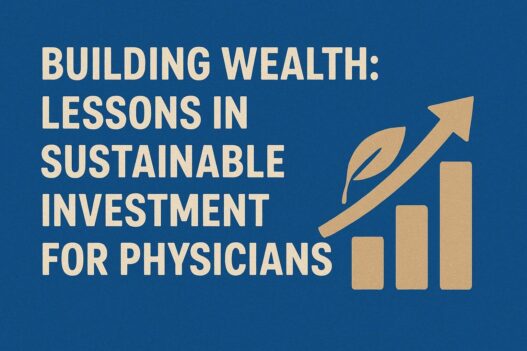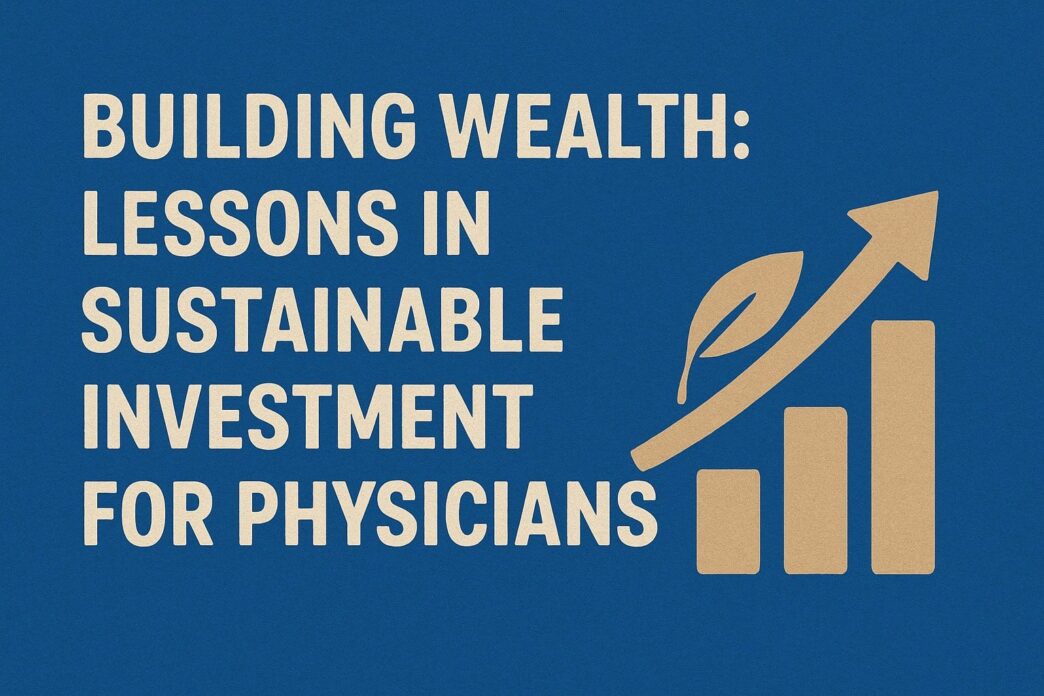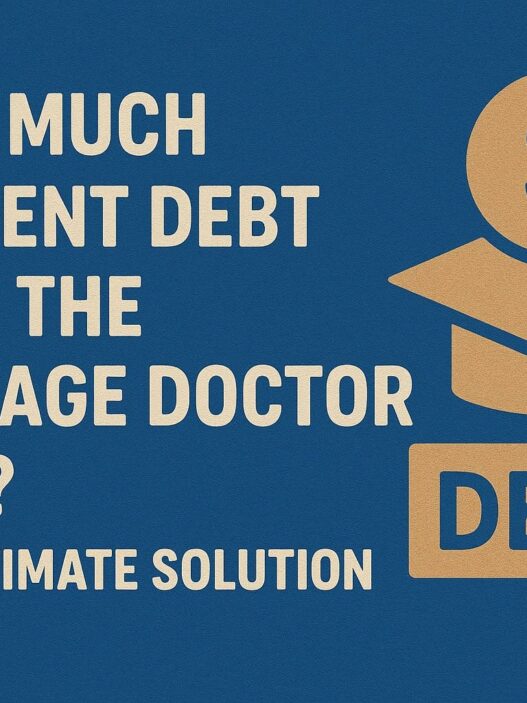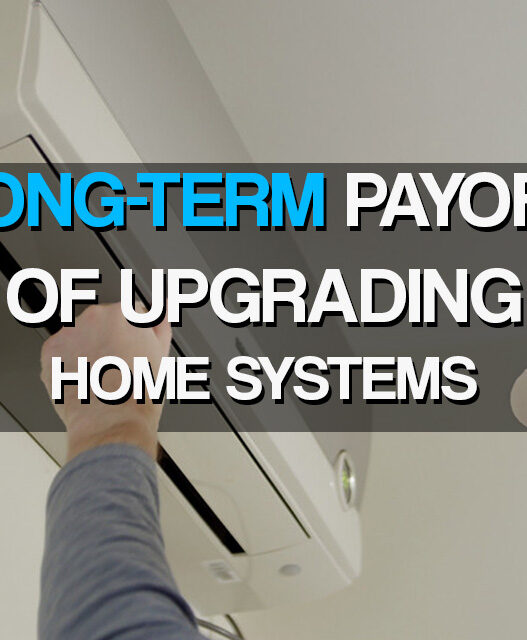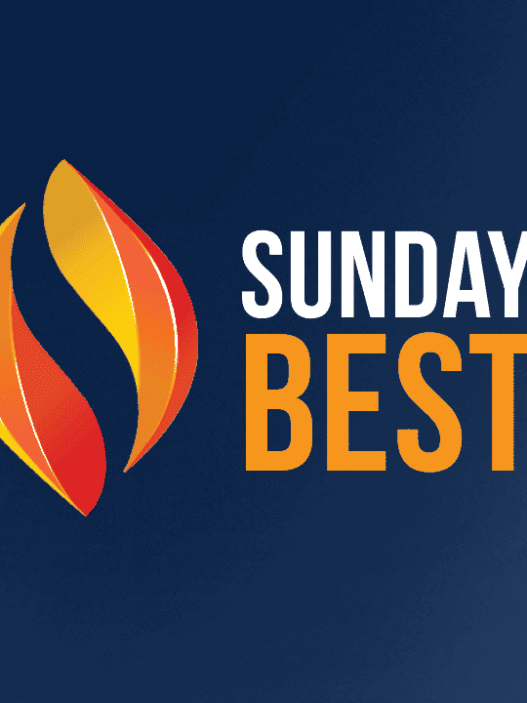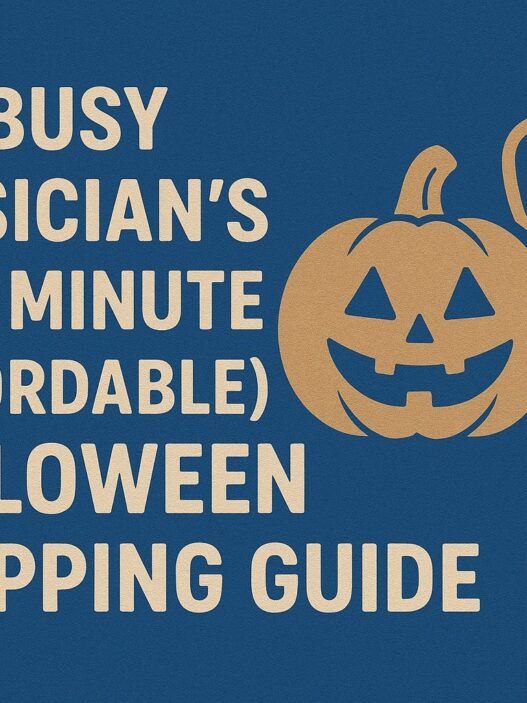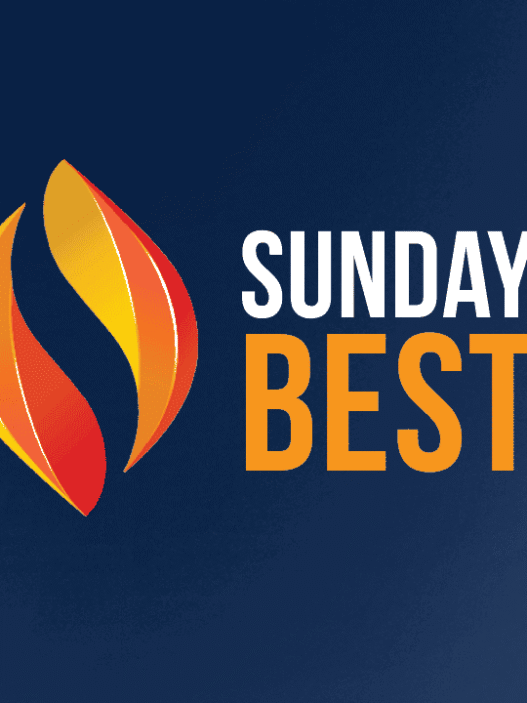Most of us enter medicine because we care about outcomes, lives, and long-term impact. Yet, somewhere along the way, many of us get reeled into this twisted notion that investing should mimic a race, one where we zoom ahead, passing everyone else, reveling in the adrenaline.
In reality, the same logic that governs good patient care, like steady processes, attention to fundamentals, and resilience in the face of complications, applies to your financial life.
You don't need your investment strategy to add more chaos to your already complex day-job. What you need is a sustainable investment strategy that makes sure you can build wealth with your health, and sanity intact.
Bogumil Baranowski, investment advisor and author of Money, Life, Family, uses a pretty neat metaphor.
Two vehicles leave at the same time. One is a gleaming sports car, revved up and hungry for speed; the other is an unassuming family car, quiet, steady, dependable. Hours later they pull into the same destination.
The sports car might arrive slightly earlier, but it came with a lot of noise, watchful eyes, and erratic maneuvering. The family car arrived comfortably. In investing terms the sports-car route is aggressive, high-volatility, high-thrill.
The family-car route is sustainable, involving quiet compounding, absorbing bumps, and arrival that doesn't wreck your nerves.
For physicians, whether you're still in residency, deep into practice, or moving toward partial retirement, the method matters. You've seen how unpredictable healthcare can be with all the regulatory shifts, reimbursement changes, malpractice clouds, calls at 2 a.m.…the list goes on.
Do you really want to layer additional portfolio volatility into that?
A truly sustainable investment strategy recognizes that your life is already high-risk in many ways; your money should be the ballast, your safe bet, not another source of adrenaline.
Let's talk about how physicians can build a portfolio that matches their career stage, stress tolerance, time bandwidth, and most importantly, their desire to enjoy life outside the hospital.
Learn more about How Physicians Think About Investing
What Is a Sustainable Investing Strategy?
Before we dive into the deep-end, it's important that I go over some basics for the uninitiated.
So if you're a novice in investing, continue reading, but if you're well-versed with the basics, feel free to skip ahead.
A sustainable investment strategy is nothing revolutionary, it's simply a disciplined approach built for longevity, not spectacle.
And I don't mean sustainable in the ESG sense (though you could incorporate that too), I'm talking about sustainability in the sense of resilience, staying power, manageable volatility, and long-term compounding.
It's the type of strategy that doesn't force you to refresh your portfolio daily, doesn't steal your sleep, and doesn't amplify the stress you already endure in the clinic or operating room.
Let's walk through the core components:
- Compounding over time is the idea that returns earned are reinvested, then earn returns themselves. A moderate return over decades can outperform a high return over a shorter time if the high-return path blows up in between.
- Diversification is the act of spreading your investments across asset classes like stocks, bonds, real assets, so that one janky slice (say, “small-cap biotech gambles”) doesn't topple the whole. It's the classic “don't put all your eggs in one basket” approach.
- Risk-adjusted return focus is how much you go up per unit of volatility. Scholars have found that aggressive strategies often deliver higher peaks but much deeper valleys; the sustainable plan prefers shallower valleys.
- Capital preservation/capital endurance is not something you can neglect. Especially when your career has a late arrival to the accumulation game (thanks to student loans and training timelines), you want a portfolio that doesn't decimate your progress when things go sideways.
- Alignment with your professional bandwidth and tolerance. If you're a physician working 60+ hours a week, the last thing you need is a portfolio that demands constant hand-holding or margin calls.
The alternative of bold gambits, high turnover, or chasing the next ‘hot sector' may feel exciting, but it may also leave you jaded, worn out, and worse off for having taken the ride. More often than not, building wealth is just…boring.
If you're new to investing, check out 12 YouTube Channels to Learn Investing and Stocks
Aggressive Investing
Now let's talk about the sports-car route. Aggressive investing is exactly what it sounds like. You're willing to accept big swings in hopes of big rewards.
For the right person it might be fine, but for a physician with enough volatility in other parts of life, it can be an unnecessary stress amplifier.
Aggressive strategies often involve focusing heavily on small-cap stocks, emerging markets, high-yield (junk) bonds, private equity or venture capital, options trading, or sector bets where you might allocate 70% to 80% to equities and little in fixed income.
An aggressive portfolio usually means 80% equities and 20% bonds versus a more moderate 60/40 split. Aggressive portfolios may produce massive out-performance but you do need to mind the significantly higher drawdowns.
According to one CFI dataset, the median drawdown of an aggressive strategy was around -10.8% while the conservative strategy's median drawdown was about -5.08%. That's roughly double the downside.
As a physician who already has to deal with irregular income early on, heavy debt, delayed time to full earning potential, and risk in your professional identity (malpractice, burnout, regulatory shifts), adding an aggressive portfolio means adding financial stress on top of all that.
Suppose your portfolio drops 40% in its first 3 years of attending practice, your mindset may shift, you might pull out, you might change course, or you might focus on income generation instead of long-term growth.
That, my friends, is the real risk of this kind of strategy.
In short, aggressive investing is fine, awesome even, if you truly understand the risk, if you have the stomach for it, if you aren't relying on the capital for some time, and if you're okay handling the emotional toll.
But for many physicians, I'd say it's a mismatch.
Does Sustainable Mean Settling for Less?
Nope. Many of us fall prey to the myth, or the assumption that “sustainable” equals “slow” or “less.” That's a false dichotomy.
In fact, a well-constructed sustainable strategy often outperforms in the total-experience sense because of fewer distractions, fewer derailments, and fewer panic trades.
According to Medscape physicians estimate they need roughly $4.01 million in retirement savings for a comfortable lifestyle.
Yet many have only saved around $1.57M at comparable points in time. That's a gap wide enough to call chasm, but the path you choose affects how wide or narrow it gets.
Medscape Physicians and Retirement Report 2025
According to the American College of Physicians report on “Physicians' Financial Preparedness,” 55% of mid-career internists had between $500,000 and $2M saved; 15% had less than $500,000, and only about 10% felt ahead of schedule for retirement.
Meanwhile, 36% said they were behind.
If you begin investing later (common with physicians due to training years), the cost of that delay is steep.
A 40-year-old physician, for instance, who earns $250K per year, would need to save $69,300 per year to hit $4M (assuming a 6% annual return) by age 65. If they started at age 30 instead, they'd need about $33,600 per year to reach the same goal. That difference is nothing to sneeze at.
When you account for the sequence-of-returns risk (that you retire into a market decline) and behavioral responses (that you panic or sell out), the safer ‘family car' path has clear advantages for someone like us.
In other words: sustainable doesn't mean mediocre, it means robust, reliable, and suitable for your life as a physician.
Risk Tolerance, Time Horizon, and Career Stage
In medicine, you progress through phases like it's a video game. First comes residency/early career, then mid-career, followed by late career/pre-retirement.
Each phase has different income, obligations, risk tolerance, and time horizon, meaning that your investment strategy needs to be flexible enough to adapt accordingly.
Residency/Early Career
Here you may earn less, carry substantial student debt, and your full earning potential is still ahead.
The time horizon is extremely long (20 years if you're considering FIRE, but 30+ if we go by conventional retirement timelines). But you also have less margin for error given debt and possibly starting home ownership or family obligations.
At this stage, a sustainable strategy might lean somewhat growth-centric (so that you capture decades of compounding) but tempered by diversification and a conservative backend so your portfolio doesn't become a second source of anxiety.
Mid-Career
Your income likely has increased, but you also may have higher expenses (kids, home mortgage, practice buy-in, or setting up a partnership).
You may still have decades ahead, but the pressure of obligations, potential liabilities (malpractice, partnership capital), and the notion of “not screwing up the nest egg” begins to dominate.
Your risk tolerance may decline. This phase demands that the sustainable strategy become dominant by building core holdings, reducing exotic bets, and ensuring you're not exposed to catastrophic loss.
Late Career/Pre-Retirement
This is where the time horizon starts to shrink. Sequence-of-returns risk (the risk of poor market returns as you withdraw) looms large.
Many physicians project retirement in their mid-60s or later. About 30% retire between ages 60-65, and 12% retire before 60. But delaying retirement isn't a guaranteed hedge since burnout, health issues, and practice value risk are still at play.
At this stage, your sustainable strategy should skew toward capital preservation, income generation, hedge against inflation, and making sure you can transition without a portfolio crash.
Of course, this outline is illustrative, not dogma. The key to a good strategy is that it moves with you, and the sustainable path means “adjusting,” not “abandoning.”
In case you missed it: Steps of Investing for High-Income Earners to Achieve Financial Independence
Building a Portfolio That Lasts
So, how do you build this sustainable strategy in practical terms?
To begin with, you ought to decide on your destination. How much money will you need, not just to retire but to live comfortably, to fund your family, to do the things outside medicine you value.
Surveys suggest physicians set the target around $4 million on average, but if your actual number is higher (or lower), that's fine, you just need to get specific.
Then ask yourself: how much of that is already saved, how much do you need to save monthly, and how will inflation, taxes, and healthcare costs play in.
Next, you need to build your core.
For most physicians that means low-cost index funds or ETFs for global equities, plus fixed income (investment grade bonds, possibly inflation-protected securities). Keep fees minimal because every percentage point you lose to fees is compounding lost over decades.
It's also a good idea to diversify away from concentration risk. For physicians, the biggest concentration risk might be your own practice. Your income, your human capital, maybe your practice equity are all highly correlated with your life risks.
Your portfolio should help counterbalance that. So even if you have practice ownership, avoid heavy exposure to your own industry theme bets in the portfolio (i.e., don't load up on healthcare specialty stocks just because you know medicine).
Set some rebalancing rules and automate them if possible. Busy physicians don't have time to micromanage. If your equity portion drifts upward because of a bull run, rebalance back to your target allocation so your risk doesn't get stealthier.
Erect financial guardrails around “fun money.” This is where the “sports car” temptation enters. Maybe you want a small allocation (10-20%) to higher-risk growth assets, but treat it as the “fun bucket,” not the foundation. Make sure that the bucket's size is such that a 50% drawdown won't wreck your entire plan.
It's also wise to guard yourself against mental and emotional strain. If this year has taught us anything, it's that market drawdowns will happen.
There's no escaping them. A sustainable strategy is one where you don't feel like throwing up, or switching everything out just because the headline screams “crash.”
You build a plan you can stick with, because staying invested matters more than picking the highest flyer.
Revisit and adjust your plan as life changes. If you buy into a practice, if you partner in, if you have major health changes, if you shift to part-time, if your spouse's career changes, no matter what it is, your plan should update as opposed to staying static.
Finally, pay attention to retirement-specific threats like healthcare costs, sequence-of-returns risk, longevity risk.
Estimates suggest a 65-year-old couple may need around $330,000 just for medical expenses in retirement, not counting long-term care. That's a bucket you'd rather have covered than hope for miracles. Your future-self would be ever so grateful.
For physicians whose income is high and thus Social Security benefits may be limited (since they exceed the wage base), relying on Social Security as a major income source is unrealistic unless you spend down in order to qualify.
A good portfolio, your portfolio, must reflect all these realities.
Final Thoughts
Medicine is hardly a sprint. Most of us don't enter this field just to rush to the finish line, we do it to build, sustain, and impact.
It goes without saying that our investment life should mirror that. The flashy thrills of aggressive investing may look appealing, and they are, what with the bigger returns, and faster goals met. But if your body, mind, or portfolio suffers en route, is it worth it? If you think it is, then that's great too.
A sustainable investment strategy, however, lets you remain in the driver's seat, keeping your professional excellence, personal health, and financial clarity all intact, as you leisurely cruise to being wealthy.
We've all heard the saying “easy come, and easy go.” Building wealth, the generational kind, does not come by sprinting. It requires patience and endurance. The kind physicians are already so adept at.
Here's my question to you: when it comes to investing, which camp do you fall into? Are you the daredevil who loves the thrill of chasing risk for reward, or the slow and steady tortoise who believes steady compounding always wins the marathon? Share your strategy below. Your perspective might be the insight another physician needs to find their financial stride.
Frequently Asked Questions
What does a “sustainable investment strategy” mean?
For a physician, “sustainable” means an investment approach designed to endure, instead of focusing on quick wins or high-adrenaline bets. It emphasizes steady compounding, diversification, manageable volatility, alignment with your professional bandwidth and personal tolerances, and preserving capital while still growing. It's about building wealth without burning out.
How does aggressive investing differ from a sustainable strategy?
Aggressive investing typically means large allocations to high-risk/high-reward assets (small-cap stocks, emerging markets, venture capital, etc.), often resulting in bigger drawdowns. A sustainable strategy tilts toward moderate risk, more predictable performance, and aims to maintain your peace of mind while the portfolio works for you.
As a physician with a demanding career, why does this matter to me?
Because you already deal with high stakes: patient lives, regulatory complexity, long hours, liability. If your investment portfolio adds stress through big swings, sleepless nights, constant monitoring, you're layering risk on top of risk. A sustainable investment strategy gives you the financial ballast so your portfolio isn't the “wild card” in your life.
When should I shift my asset allocation because I'm moving through career stages?
- Residency/Early Career: Long time horizon, but perhaps lower income and higher debt. A bit more growth tilt is okay, but still built on a stable base.
- Mid-Career: Greater income, greater obligations, less margin for error. The emphasis shifts toward protecting the nest-egg and managing risk.
- Late Career/Pre-Retirement: Time horizon shrinks. Sequence-of-returns risk and capital preservation dominate. Your investment ride should be smooth rather than wild.
Doesn't a slower, steadier portfolio mean I'm “settling for less” in returns?
Not necessarily. The point is less about chasing the top possible return and more about arriving at your goals with your health, freedom and sanity intact. When you factor in behavioral risks (panic selling in downturns), sequence-of-returns risks, and the cost of high volatility, steady often wins.
What practical steps can I take to build a sustainable portfolio?
Some immediate steps include:
- Define your destination (how much you need and when).
- Build a core with low-cost diversified holdings (global equities + bonds).
- Limit “fun/trial” buckets for higher‐risk assets so they don't upend the whole plan.
- Automate contributions and rebalancing (you're busy!).
- Adjust allocations as life changes (practice buy-in, kids, part-time work, etc.).
- Pay attention to retirement-specific threats (healthcare costs, inflation, sequence risk).
How does this strategy factor in my high-income physician reality (student loans, late start, etc.)?
You may face delayed savings start, heavy debt, late accumulation. Thus your strategy must compensate not by turning up risk blindly, but by emphasizing consistency, cost-efficiency, keeping fees low, avoiding the janky gambles that can derail you, and sticking to a plan you can maintain over decades.
What questions should I ask myself when choosing my investment “vehicle”?
Ask:
- If my portfolio drops 30–40% this year, will I panic?
- Does this strategy require me to watch markets daily (when I have patients to see)?
- Am I investing in something because it feels like a thrill, or because it fits my life?
- Are my fees and tax-impacts optimized?
- Does this strategy allow me to stay aligned with my values and lifestyle outside medicine?
What are some common mistakes physicians make in investing that derail sustainability?
- Thinking that investing is another sprint rather than a marathon.
- Letting high income late in career lead to oversized risk.
- Being overly leveraged, concentratedm or ignoring volatility's toll.
- Failing to adapt as career/professional risk changes (e.g., switching to part-time, practice scale, health event).
- Confusing high return potential with high sustainability.








